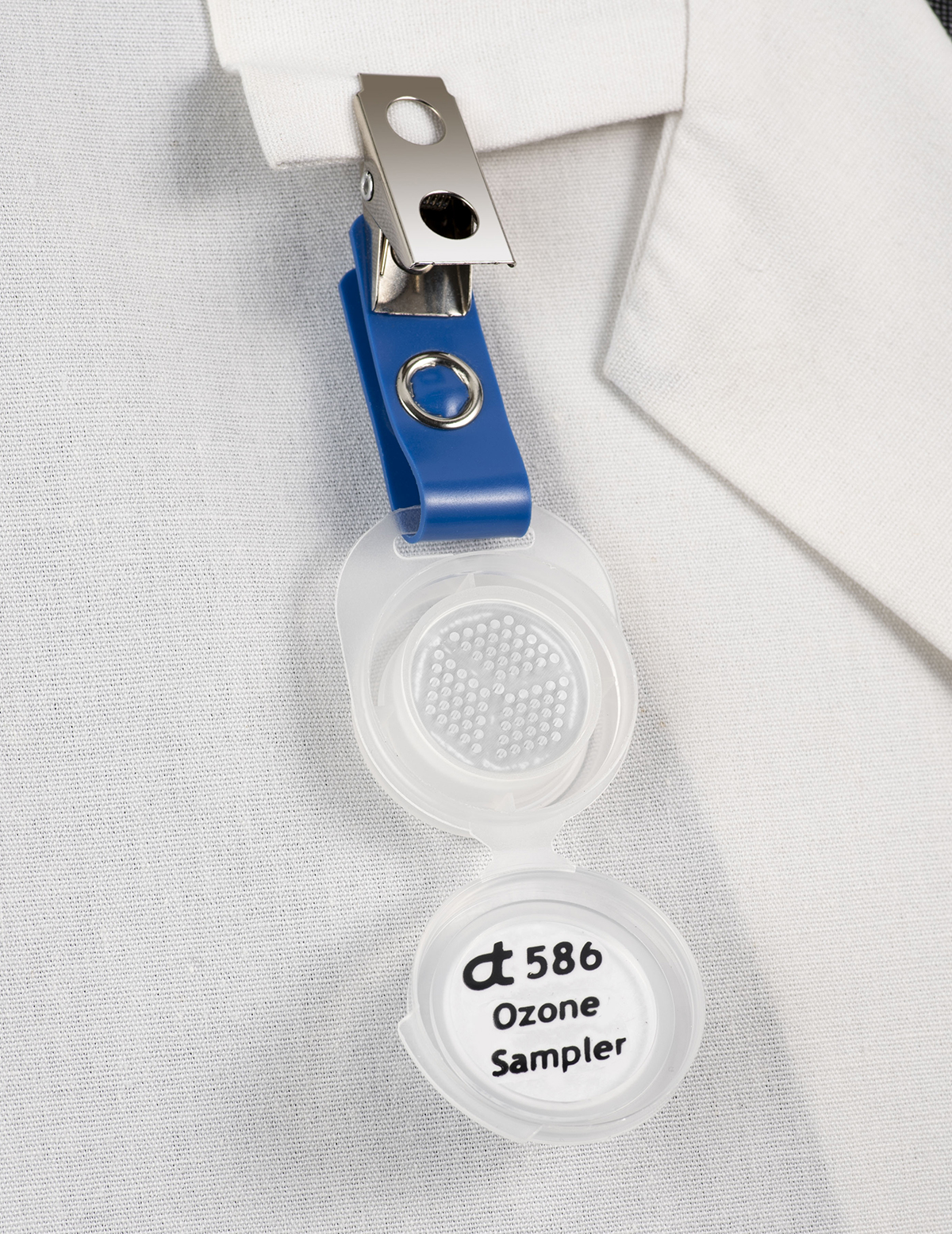586 Ozone Monitor
Associated Analytical Methods: OSHA 214
Easily measure personal exposure to ozone with our 586 Ozone Monitor! Ozone is collected indirectly on fiberglass treated with nitrite. The ozone reacts with the nitrite ion (NO2–) to form a nitrate ion (NO3–). The filter is then extracted with deionized water and analyzed for nitrate by ion chromatography. A low instrument reporting limit is made possible by using an ultra pure source of nitrite.
Refrigerated product. Before sampling, maximum 2 days in shipping. Store refrigerated upon receipt for maximum shelf life. After sampling, store and ship at room temperature.
Use our Quick Order Form for the entire list of products online.
Tech Doc
Storage
Before sampling, ship at room temperature to arrive within 2 business days to preserve maximum shelf life. Store refrigerated.
After sampling, store and ship at room temperature. Ship samples to arrive at the laboratory within 14 days of sampling.
Use For
Monitor may be used for 8-hour TWA sampling.
The 586 Reporting Limit
Frequently, we will get asked about our Ozone reporting limit and how it can be lower than other labs. There are several possible reasons, but the most likely is the other labs are being more conservative in their reporting limit determinations. Below is a reply we gave to a recent customer inquiry:
When it comes to the reporting limit for the 586 Ozone badge, it’ll help to review how the 586 badge works. Inside the 586 badge is a wafer with sodium nitrite on it. When ozone diffuses into the badge, it reacts with nitrite (NO2) to create nitrate (NO3). It’s the lab’s job to find out how much nitrate is on the badge and then convert the result back to presence of ozone. However, this task is complicated by that fact that, so far, it’s impossible to obtain sodium nitrite without having some nitrate present. That means there is a background of ‘ozone” on the wafers to deal with. In the Assay 586 badges, the average is about 0.2 ug of “ozone”.
Most labs would see the background of 0.2 ug and use a reporting limit well above it. Maybe 0.8 ug. However, if we used a RL of 0.8 ug for an Assay 586 badge, the 8 hour reporting limit would be 0.056 ppm, already half the OSHA PEL for Ozone of 0.1 ppm. (To keep from having a reporting limit higher than the OSHA PEL, we do recommend customers use the Ozone badge for 8 hours.)
But we realize customers would like a lower reporting limit than 0.8 ug. So, since the background of ozone is very steady, our reporting limit is not based on the average amount of background, but instead the standard deviation of ‘ozone’ found in the badges. You can think of it as a boat sitting on 0.2 meters of water, with little waves causing the boat to go up and down. As long as the water is 0.2 meters deep, it’s the standard deviation of the little waves that determine your ability to distinguish a positive result at your reporting limit.
In a recent study, we spiked 0.1 ug of ‘ozone’ onto 7 badges and got a standard deviation of 0.0274 ug. To determine the method detection limit, the standard deviation was multiplied by the student t value for 7 replicates and we came up with a MDL of 0.082 ug, below the desired reporting limit of 0.1 ug. The ability to see the reporting limit when ‘ozone’ is spiked on media is verified annually. The spike has been performed year after year, yielding acceptable results. In addition, with each analytical sequence, we analyze a reporting limit standard at 0.1 ug which has to be recovered within limits. All this satisfies the ISO 17025 policies for reporting limits.
Labs can have different reporting limits and still meet ISO 17025 policies. Maybe they have a newer instrument or a more sensitive one. Maybe instead of extracting the media with 2 mL, they use 6 mL. Or, as in this case, we are just more aggressive that other labs.




